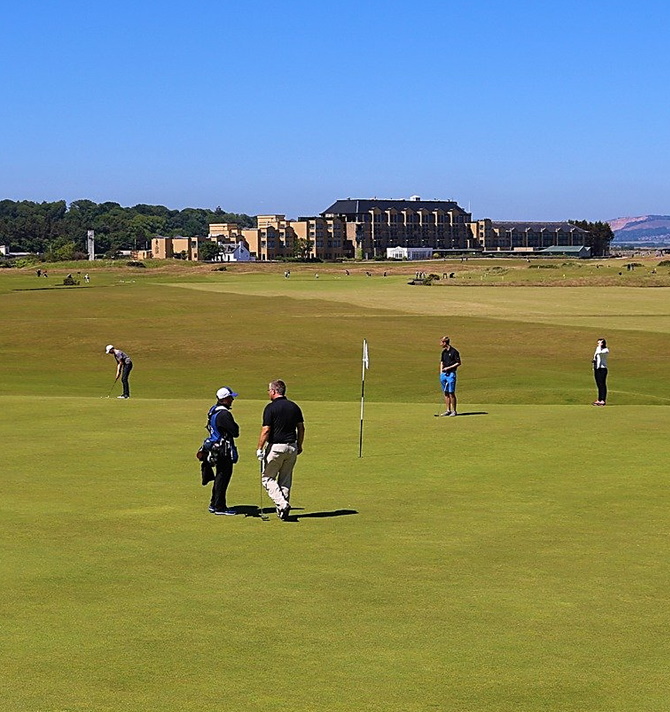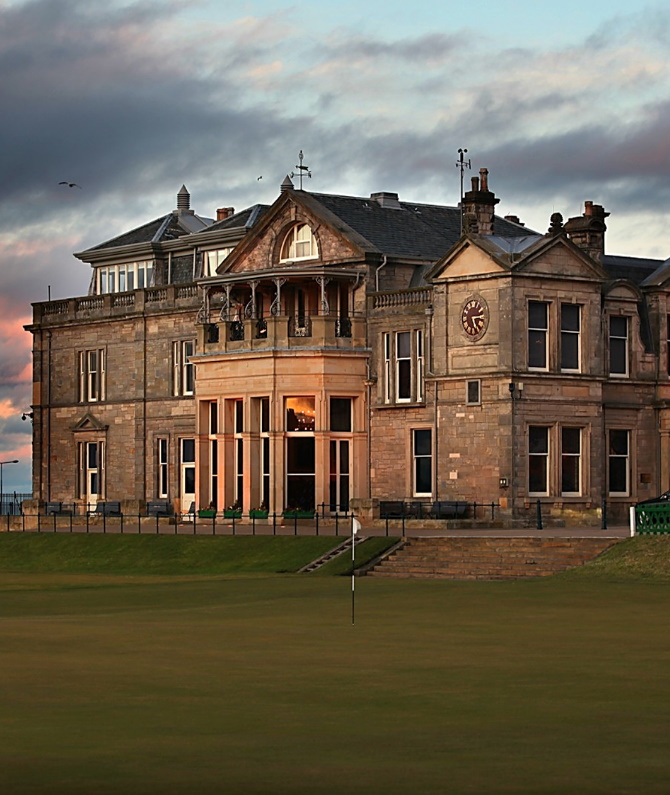
No one knows for certain when it was built, or by whom. It was conceived before earth moving machinery made artificial innovation possible. The course is of a time where golfers looked into the landscape and interpreted hazards and designed holes around what nature had bequeathed them. Calls to try and modernise it have always been tightly controlled. It’ll likely be your round here that will end up consuming the memory as you convince yourself that you could (and should) have gone six shots better. Then it’s ‘got you’
For many of us, this is likely to be the most nervous you’ll ever feel standing on the tee. Behind the large bay windows of the R&A’s headquarters judgemental members will be watching you drive. There’s a good chance that tourists will be lined up along the adjacent road with phones to the ready too. One appalling shank stands a chance of finding its way onto youtube! It takes some missing in truth. It’s wide, although Ian Baker Finch did manage to carve one off to the left and down the road in 1995. The Swilcan Burn crosses in front of the green with the pin often set close to the front to bring it into play, but it’s really a flick across the water and rarely catches players out.
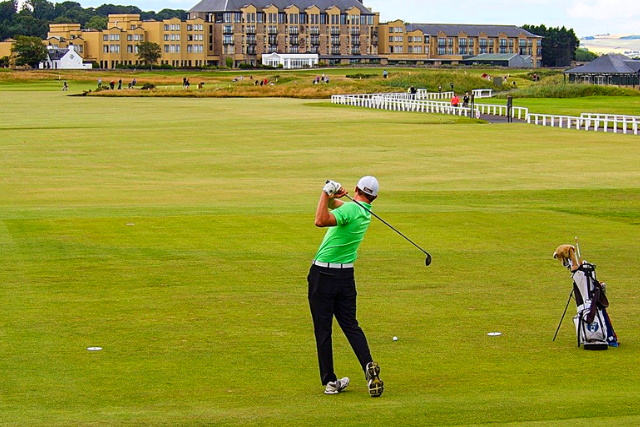
St Andrews 1st.
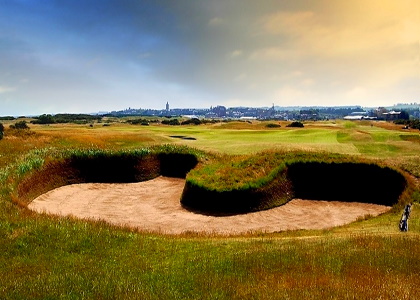
The course is heavily bunkered, 112 in total. Many have developed a personality over the years. The Beardies (5) The Coffins (6) The Principals Nose (16) the Road Hole (17) and the most feared of the lot Hell bunker (14). The bunkers aren’t normally big, but they are deep traditional Scottish ‘pot bunkers’ with steep rivet faces built up with layers of turf
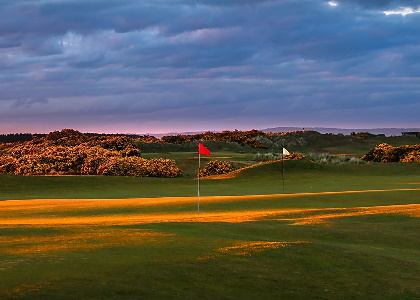
Maintenance was an early consideration. St Andrews adopted the unique solution of having huge double-greens with two holes being paired on the same putting surface. It might sound unworkable, but such are the size of these things you it doesn’t interfere. It’s not unheard of however for someone to lose concentration and play to the wrong flag
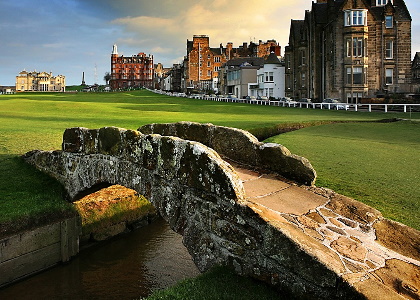
The Iconic bridge is crossed shortly after driving off the 18th. It was Originally built at least 700 years ago to help shepherds get livestock across the Swilcan burn. Today it servesas a photo opportunity. the St Andrews Links Trust long ago gave up trying to police it. Golfers take their turn for a pose whilst groups of tourists run across the fairway in between tee-shots

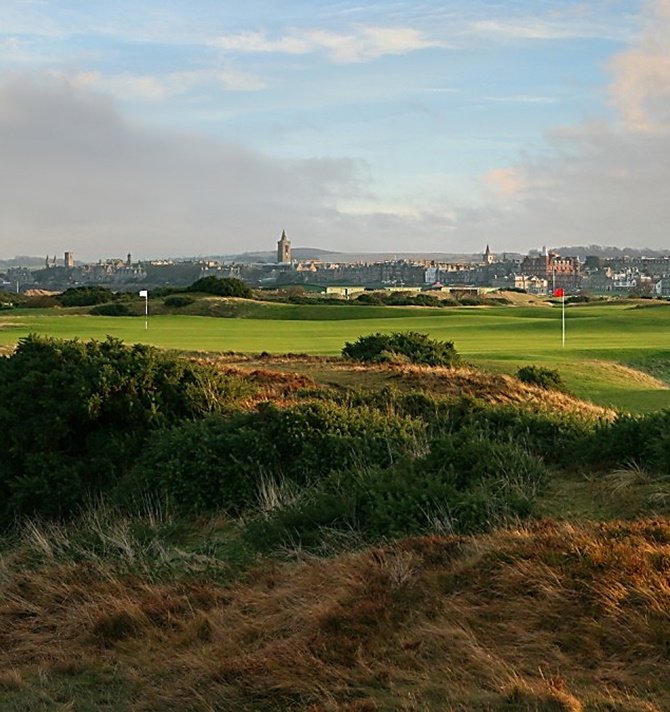
By 2010 the 14th had eclipsed the 6th at Royal Troon and become the longest on the Open Championship rotation when a new tee pushed it out to 618 yards . The 14th is home to one of the Old Course’s most notorious score-wreckers, the somewhat unimaginatively named ‘Hell Bunker’, whose reputation has become so fearsome it now puts the almost as deadly Beardies in the shade.
The bunker is 10-foot deep and coming to rest up against its face offers you absolute no way of escaping other than retreating from whence you came, otherwise watch your multiply as you helplessly thrash about. There have been some horrendous scores returned when the red mist comes down. If you want some consolation however, even Jack Nicklaus took three to get out of here in 1995.
Flippantly referred to as “the shortest par 5 in Scotland”, the perils of the par 3, eleventh, have long been known about by the long-suffering golfers of St Andrews.
Strath bunker is a small pot bunker on the right side of the 11th green (near the middle of the double green), and Hill bunker is a large, deep bunker on the left side that is the most dangerous hazard. The line off the tee is between the two bunkers to a green that slopes steeply from back to front. Balls that come up short are likely to roll off into a swale fronting the green.

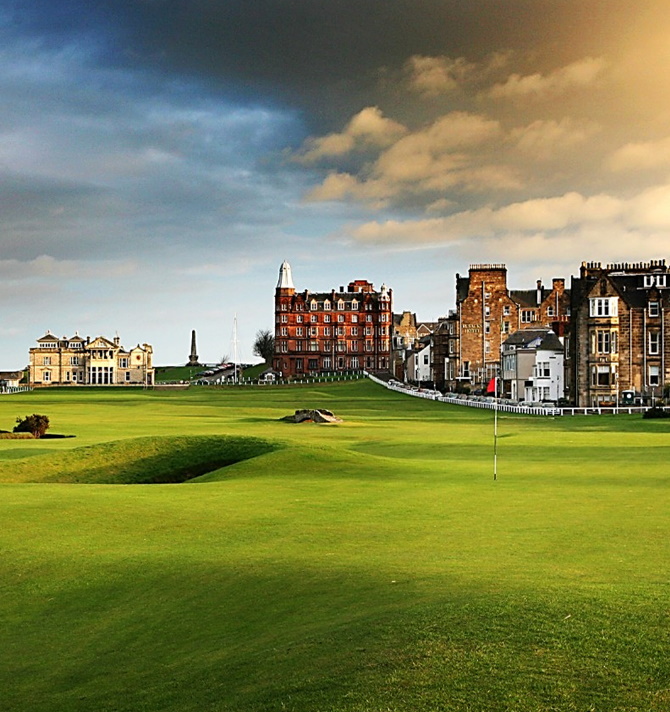
All three scores are possible here, ‘bogey’, ‘double’ and ‘triple’. No hole on the Open rotation plays to a bogey more than the ‘Road Hole’. The tee-shot is blind, played over a hotel wall into a fairway that narrows the further you try to advance on it. The approach is the key though. The green is narrow and set at 45 degree to the approach. Viewed from above it resembles a peanut, with bulbous ends and a slender middle. Playing to the nearest of these bulges leaves a lengthy putt over a ridge with little prospect of anything better than a par. Trying to hit the middle section is hideously difficult. Not only is it a mere 16yds in width to land on, it is brutally defended. The front is protected by a deep tapering bunker that draws bouncing balls into it. The rear is protected by a swail that rolls down to a road, carrying anything hit too firmly across the tarmac and up against a dry stone wall.
In 1970 Jack Nicklaus drove the 18th green on the St Andrews Old Course. It prompted an old sage to remark “I see you’ve learnt the secret of this game”. Nicklaus took the bait and enquired. “Remove the need for a second shot”. Jack smiled. In the 2010 this par 4 returned a compassionate scoring average of 3.6288. The ‘Valley of Sin’, with a pin placed near the front can cause players to misread a chip or putt from off the surface and have it roll back to their feet, but its otherwise regarded as a friendly hole. The most famous putt is that of Doug Sanders in 1970. Needing to hole out from two-foot to secure the claret jug in blustery conditions he came off his shot to reset himself. On his second attempt his putt slid agonisingly wide and Nicklaus won the play-off. The hole is probably more about the vista, the swilcan bridge, and ‘the walk’ up the fairway
